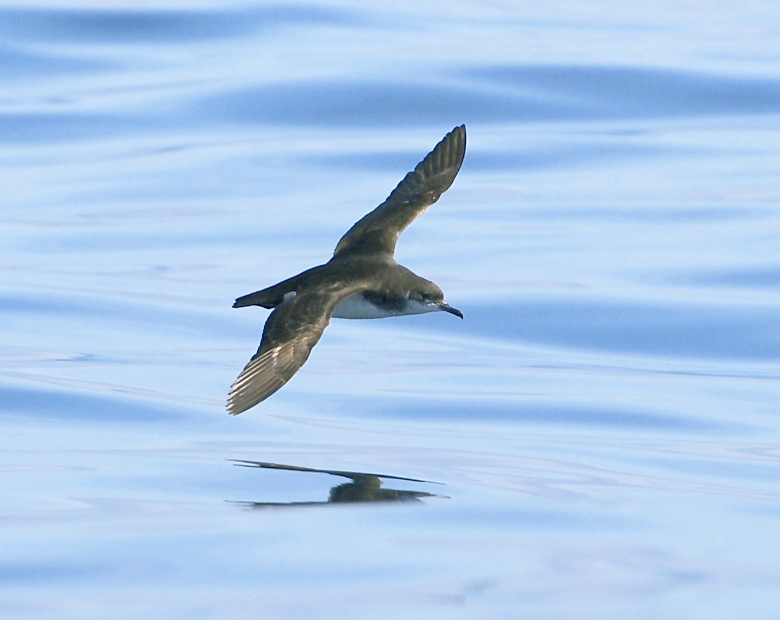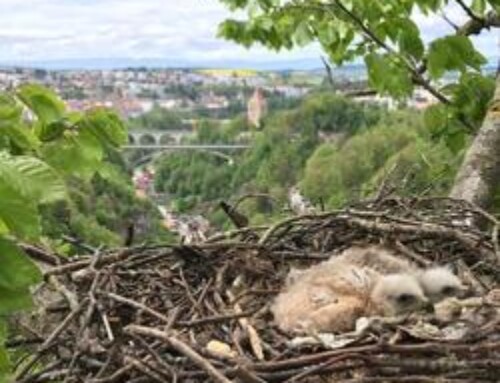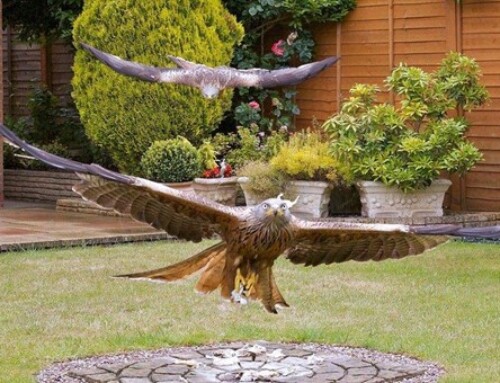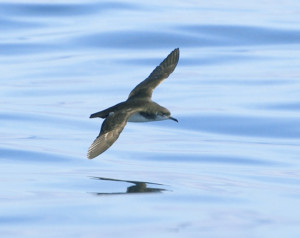
LINKED PAPER
Early‐life development of contrasting outbound and return migration routes in a long‐lived seabird. Wynn, J., Guilford, T., Padget, O., Perrins, C. M., McKee, N., Gillies, N., Tyson, C., Dean, B., Kirk, H. & Fayet, A. L. 2022. IBIS. DOI: 10.1111/ibi.13030. VIEW
Manx Shearwaters (Puffinus puffinus) undertake their first migration without their parents. Only a few days after leaving the nest, these birds can already travel up to 2000 kilometres. On their own. This observation suggests that the migratory behaviour of the Manx Shearwater has a large genetic component. An internal genetic program that guides their first migration (Merlin & Liedvogel 2019). A few years later, these birds return to their breeding grounds (Guilford et al. 2009). Is this return trip also encoded in their genes? Or do they learn the way back from other birds? A recent Ibis-study tried to figure this out.
South America
In 2011, Joe Wynn and his colleagues used GPS-devices to follow three young Manx Shearwaters from Lighthouse Island (Northern Ireland) to their wintering grounds in South America. All three birds completed this long journey in about two months. Unfortunately, only one GPS-device continued recording for three years after fledging. The information from this one bird allowed the researchers to determine its return voyage toward the breeding grounds. Interestingly, this individual seemed to develop its return trip in consecutive steps. Each year, it would move more to the north before heading back to its wintering grounds. This bird was found dead in 2015, close to its original colony. Hence, we don’t know if it ever reached its breeding site.
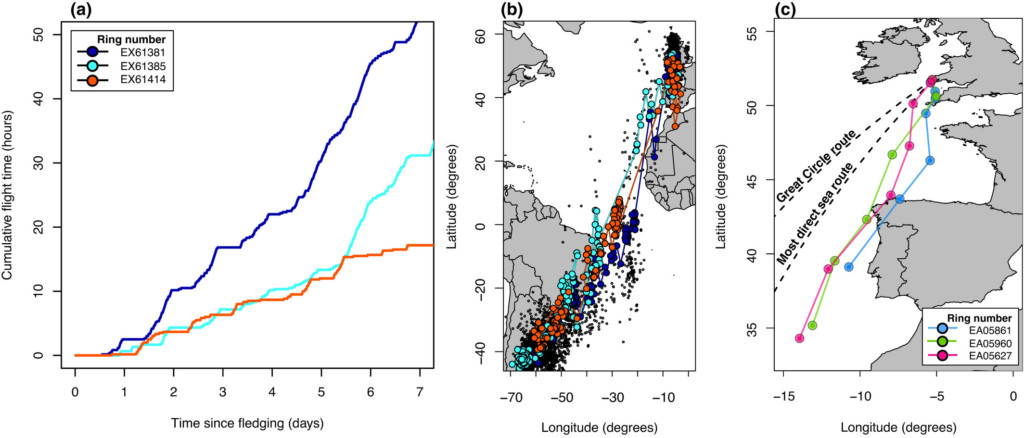
Figure 1. The three young Manx Shearwaters started their migration a few days after fledging (figure a). The maps show their complete migration route (figure b) and the first seven days of their epic journey (figure c).
Exploring and refining
Based on these patterns, the researchers suggest that the return migration of Manx Shearwater is largely determined by genetics and non-social learning. Despite residing in the same wintering areas as adult birds, the immature individuals followed very different return routes. It is thus unlikely that they learned anything from other birds. Instead, different migration routes might be shaped by a combination of genetics and environmental conditions. Indeed, several seabird species adjust their migratory behaviour over successive years using an ‘exploration-refinement’ strategy (Campioni et al. 2020, Fayet 2020). No need to follow other birds, just carve out your own path.
References
Campioni, L., Dias, M.P., Granadeiro, J.P. & Catry, P. (2020). An ontogenetic perspective on migratory strategy of a long-lived pelagic seabird: timings and destinations change progressively during maturation. Journal of Animal Ecology 89: 29– 43. VIEW
Fayet, A.L. (2020). Exploration and refinement of migratory routes in long-lived birds. Journal of Animal Ecology 89: 16– 19. VIEW
Guilford, T., Meade, J., Willis, J., Phillips, R.A., Boyle, D., Roberts, S., Collett, M., Freeman, R. & Perrins, C.M. (2009). Migration and stopover in a small pelagic seabird, the Manx shearwater Puffinus puffinus: insights from machine learning. Proceedings of the Royal Society B: Biological Sciences 276: 1215– 1223 VIEW
Merlin, C. & Liedvogel, M. (2019). The genetics and epigenetics of animal migration and orientation: birds, butterflies and beyond. Journal of Experimental Biology 222: jeb191890. VIEW
Image credits
Top right: Manx Shearwaters (Puffinus puffinus) | Matt Witt | CC BY-SA 3.0 Wikimedia Commons
Blog posts express the views of the individual author(s) and not those of the BOU.
If you want to write about your research in #theBOUblog, then please see here


